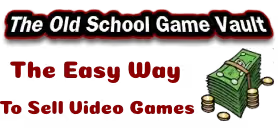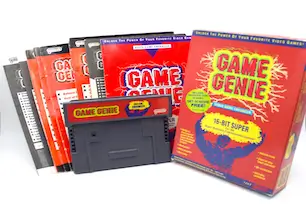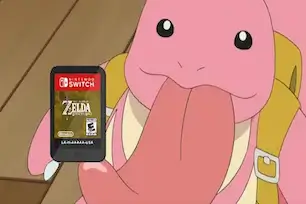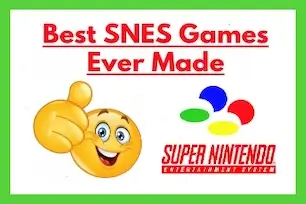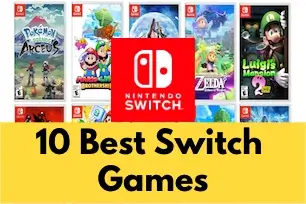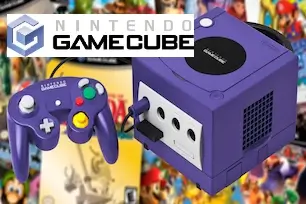Wondering how to tell if your NES game is a first print? Let’s be blunt: good luck!
There’s no single “rule of thumb” for NES first prints. Every title is its own chaotic rabbit hole filled with mystery, misinformation, and collector disputes.
But don't worry—The Old School Game Vault has done the homework most won’t. Below is your definitive, research-based guide to understanding NES first prints (including specific game examples).
The Table of Contents
- Example 1: Super Mario Bros. 3: – The “Left Bros” First Print Variant
- Example 2: Mike Tyson’s Punch-Out!! – The White Bullets Controversy
- Example 3: Castlevania: The Overlap Label First Print
- Example 4: The Legend of Zelda: TM vs. ® Seal Variant
- Example 5: Mega Man: The “Dr. Wright” First Print Typo
- Example 6: Dragon Warrior: The “1HP Box” First Print
- Example 7: Rad Racer: Daytime Screenshot First Print
- Example 8: Gun.Smoke: The “Bar Artwork” First Print
What Is a First Print NES Game?
In retro game collecting, a "first print" refers to the very first production run of a game—before packaging changes, artwork tweaks, or label corrections took place.
packaging changes, artwork tweaks, or label corrections took place.
While the game content usually stays the same, subtle packaging and cartridge differences often separate a first print from later reprints.
Does NES First Print Status Actually Matter?
Short answer: Yes… to certain collectors.
Hardcore collectors will pay top dollar (sometimes thousands of dollars) for a mint-condition, sealed, first-print NES game. But here’s the twist:
- First prints aren’t always the rarest version.
- Later prints can be more valuable if population counts are lower.
- The NES retro market fluctuates wildly and unpredictably.
Example: A sealed WATA 9.6/A+ Legend of Zelda sold for $2,700 on eBay—then resold 13 days later for $1,100 less.
(Source: Heritage Auctions)
How to Tell If Your NES Game Is a First Print (And Why It’s So Hard)
Here’s why first-print NES game identification is such a mess:
- Every NES game has different "tells"
- Many details are disputed or unverified
- Information is often secret or anecdotal
- Some "truths" are just marketplace myths collectors agree on
Let’s break it down further:
Different for Every Game
-
- No universal checklist exists. What’s true for Super Mario Bros. 3 won’t apply to Mike Tyson’s Punch-Out!! The same concept applies when comparing 3-screw and 5-screw NES cartridge variants.
-
- Uncertain, Conflicting Information
-
- Example: The “Left Bros” Super Mario Bros. 3 variant is called a first print… but there were at least three publication runs of Left Bros boxes, and only one was technically first.
No Production Records
-
- Nintendo and third-party publishers didn’t track these packaging changes for public reference.
- If you’re curious about other unusual NES cartridge oddities, check out our guide on How to Find the Elusive NES to Famicom Adapters.
Secret Knowledge Held by Investors
-
- People who know the real answers are usually investors who profit by keeping you in the dark.
How To Tell If Your NES Game Is a First Print: Actual Game Examples
Now here’s the good news. Although nobody can or will tell you how to accurately identify a first print, we are going to tell you something that’s infinitely more important.
Namely, here are the (currently up-to-date) official rules of how to determine the first print status of several specific NES games. To clarify, these are the “tells” that most buyers and sellers consider legit, the generally accepted details that indicate a first print.
Don’t worry, my little buttercups, if you’re curious about the different NES Seal variations, we’ve got you covered! Check out our Complete Original Nintendo NES Label / Seal Guide for all the details!
Example 1: Super Mario Bros. 3: – The “Left Bros” First Print Variant
This image compares different print runs of Super Mario Bros. 3 for the NES:🔎 Super Mario Bros. 3 First Print – How to Spot the Left Bros Variant
Example 2: Mike Tyson’s Punch-Out!! – The White Bullets Controversy
Collectors can identify different production runs of Mike Tyson’s Punch-Out!! by key box and label features that changed over time. First Production: The earliest release has No Rev-A marking and white bullet points on the back of the box. Early Production: Still No Rev-A, but bullet points were changed from white to orange. Mid Production: The first version to include a Rev-A marking and a round Nintendo Seal of Quality (SOQ). This marks the packaging transition era. Late Production (1987): Updated with the oval Seal of Quality introduced by Nintendo later that year. Last Production (1989): Still Rev-A with an oval seal, but includes the 1989 copyright and final printing details before Mike Tyson’s Punch-Out!! was replaced by Punch-Out!! Featuring Mr. Dream. This timeline helps collectors determine which printing they own—from the rare white-bullet first print to the common late-1980s reissues.
🥊 Mike Tyson’s Punch-Out!! – First Print & Production Timeline Guide
For a detailed breakdown of Punch-Out!! variants, including the White Bullets vs Orange Bullets debate, check out WATA Games’ Mike Tyson’s Punch-Out!! Variant Guide.
Example 3: Castlevania: The Overlap Label First Print
The first-print Castlevania cartridge can be identified by the “Double Konami” layout — the Konami logo appears both at the top of the label and again within the artwork border. This early version also includes the round Nintendo Seal of Quality and has no “Rev-A” marking, which appears on later reprints. Later printings removed the top Konami logo, leaving it only within the artwork frame. This subtle change helps collectors easily spot the earliest release.🏰 Castlevania First Print – How to Identify the “Double Konami” Variant

Example 4: The Legend of Zelda: TM vs. ® Seal Variant
The first-print release of The Legend of Zelda for NES can be recognized by the small “TM” trademark symbol that appears after the game’s title on the front of the box. In later printings, Nintendo replaced the TM with the ® registered trademark symbol once the trademark was officially registered. This subtle change marks one of the easiest ways to identify an authentic first print of the original gold-box Zelda release. Other early indicators include the round Seal of Quality and the No Rev-A marking, which were updated in later runs along with the oval seal and “Rev-A” text. Collectors often refer to this as the “TM Box” variant, and it remains one of the most desirable early prints among Zelda fans.🗝️ The Legend of Zelda – First Print “TM” Box Variant

Example 5: Mega Man: The “Dr. Wright” First Print Typo
On the back of the first-print Mega Man box, the game’s description incorrectly names the villain as “Dr. Wright” instead of Dr. Wily. This typo appears exclusively on early print runs and was corrected in later releases of the game. Collectors often refer to this misprint as the “Dr. Wright version”, making it one of the most recognizable early Mega Man box variants.🤖 Mega Man First Print – The “Dr. Wright” Typo Variant
Example 6: Dragon Warrior: The “1HP Box” First Print
On the back of the first-print Dragon Warrior box, one gameplay screenshot displays the text: “Thy Hit decreased by 1.” In later printings, this same screenshot was updated to say: “Thy Hit decreased by 2.” This small but clear difference has led collectors to nickname the first print as the “1HP Box” variant.🏷️ Dragon Warrior First Print – How to Spot the “1HP Box” Screenshot Variant
Example 7: Rad Racer: Daytime Screenshot First Print
On the back of the first-print Rad Racer box, all screenshots show a daytime level. In later printings, the box was updated to include a mix of daytime and nighttime screenshots. This subtle artwork change helps collectors easily distinguish the earliest print run of Rad Racer.🏁 Rad Racer First Print – How to Identify the Daytime Screenshot Variant
Example 8: Gun.Smoke: The “Bar Artwork” First Print
The first print of Gun.Smoke features a simple, almost bland box illustration showing a lone cowboy standing in front of a bar. In later printings, Capcom replaced this with more dynamic artwork featuring horses, gunfights, and a close-up of a serious, grave-looking cowboy. This makes the original “Bar Artwork” version an easy and highly visual way to identify a first print.🏜️ Gun.Smoke First Print – How to Spot the Original “Bar Artwork” Box
Understanding NES Black Box First Prints – Your Most Reliable Clue
Nintendo’s Black Box Series (the first 30 NES games) is one of the rare exceptions where first print variations follow semi-consistent, recognizable patterns.
Here’s how collectors typically identify first prints from later runs:
Sticker Seals: Matte vs. Gloss
-
- Matte Sticker Seal = Earliest First Print
The very first 17 Black Box NES games were sealed with a dull matte sticker on the top flap of the box. - Gloss Sticker Seal = Later Print Runs
After the initial matte seal, Nintendo switched to glossy stickers for later printings.
- Matte Sticker Seal = Earliest First Print
Out of the full 30 Black Box titles, 10 of the 13 later-released games used gloss sticker seals.
Transition to Shrink Wrap
After the sticker-seal era, Nintendo moved to shrink-wrapping NES game boxes for even later printings.
Box Code Changes: 1 Code vs. 2 Code
-
- 1 Code (NES-GP):
Nintendo initially printed a generic code "NES-GP" on all Black Box game packaging. - 2 Code (NES-PXX):
Later, they switched to game-specific codes, starting with "NES-P-XX" where "XX" was a two-letter abbreviation of the game title (like "NES-PS" for Pro Wrestling).
- 1 Code (NES-GP):
The TM System Marker
-
- After the 2 Code transition, Nintendo added a "TM" trademark symbol after the word "System" on the box front.
- This extra TM symbol appeared in the final production waves for the Black Box series.
Final Three Black Box NES Releases (March 1987)
For Pro Wrestling, Slalom, and Volleyball, the expected first-print indicators are:
- 2 Code present (NES-PXX)
- No TM symbol after “System”
These three games mark the end of the Black Box era.
- For more on Black Box first print identifiers, see the Video Game Authority’s NES Black Box game guide.
Final Takeaway: Marketplace Consensus > Historical Fact
At the end of the day:
The retro game market cares more about collector consensus than actual historical production timelines.
If everyone agrees a variant like “Left Bros” or “White Bullets” equals first print, that becomes market truth—even if it’s technically inaccurate.
Have a First Print NES Game to Sell?
Whether it’s Castlevania, Zelda, or something rarer—The Old School Game Vault buys NES games and rare variants!
✅ Fast price quotes
✅ Trusted payment methods (How We Pay You – Trusted Payment Options)
✅ Top dollar for collector items
Or contact us directly for rare variant appraisals: Contact Us.
Frequently Asked Questions
How can I tell if my NES game is a first print?
- There’s no single rule for NES first prints. Each game has unique packaging or label differences, like sticker seals, box codes, screw counts, or label typos.
- Common tells include variants like the Left Bros Super Mario Bros. 3 or the TM vs ® symbol on The Legend of Zelda box.
Why are NES first prints valuable?
- NES first prints are valuable because collectors seek early production runs. Some variants are scarce, and marketplace demand drives up prices.
- Even small box or label details can impact value by hundreds or thousands of dollars.
What are some famous NES first print variants?
- Famous NES first print variants include the Left Bros Super Mario Bros. 3, White Bullets Mike Tyson’s Punch-Out!!, the Double Konami Castlevania label error, the TM box version of The Legend of Zelda, the Dr. Wright Mega Man typo, and the 1HP Box Dragon Warrior.
What is the Left Bros variant in Super Mario Bros. 3?
- The Left Bros variant refers to an early print of Super Mario Bros. 3 where the word "Bros" appears on the far left side of the box front, away from the number 3. Later prints moved the text next to the 3.
How can I identify Black Box NES first prints?
- For Black Box NES games, check for a matte sticker seal on top of the box, early 1 Code packaging (NES-GP), and the absence of TM symbols on later printings.
- Gloss stickers and shrink wrap indicate later runs.

